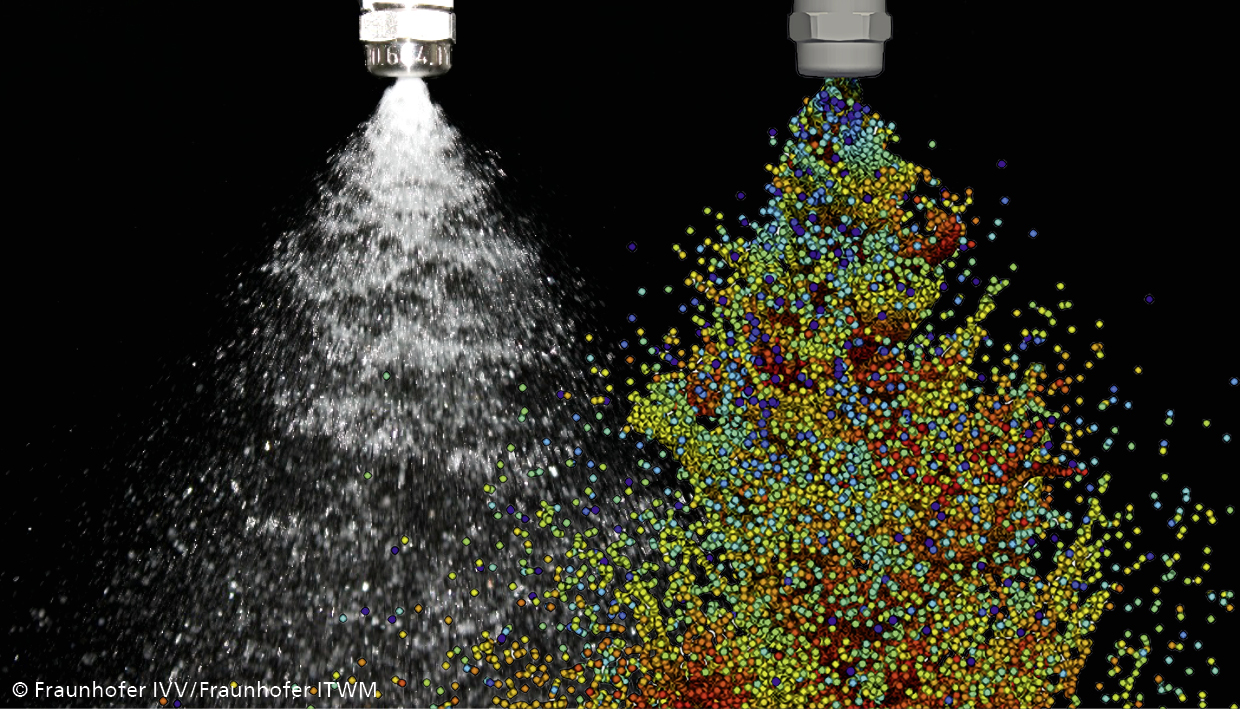Automated cleaning is used in a wide variety of application fields. In the SpraySim project, we focus on Cleaning in Place (CIP) systems from the food, beverage and pharmaceutical industries, in which the cleaning liquid is applied to the soiled surfaces to be cleaned via nozzles as a disintegrated spray jet. Especially in these industries, cleaning cannot be dispensed with, otherwise product quality suffers. In addition, cleaning is sometimes carried out several times a day. Thus, it is a costly process, requires high energy consumption and produces wastewater that is harmful to the environment.


